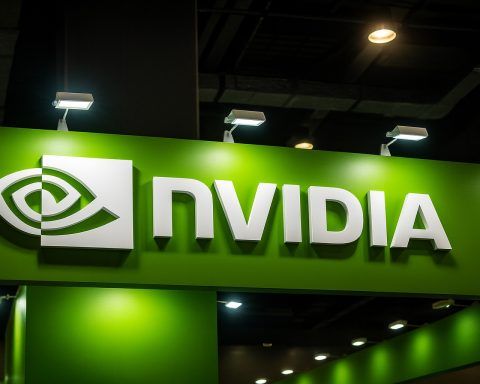Plug Power Inc. (NASDAQ: PLUG) is back in the spotlight today after a fresh capital raise sent its already-volatile stock into another steep sell‑off.
By mid‑afternoon on November 19, 2025, Plug Power shares were trading around $1.80–$1.85, down roughly 14% on the day and extending a plunge that began in Tuesday’s after‑hours session, when the stock fell about 20% to roughly $1.71 after the company announced a new $375 million convertible senior notes offering. [1]
Trading volume has exploded, with more than 180 million shares changing hands today, nearly double the stock’s recent average daily volume of about 96 million shares. [2]
At the same time, a wave of fresh analysis — from Wall Street brokers, Zacks, Investopedia, Barron’s, and The Motley Fool — is dissecting Plug’s liquidity plan, cost cuts, hydrogen project suspensions, and even a controversial $7 upside target on the stock. [3]
Key Takeaways for November 19, 2025
- Stock plunge: PLUG is down a double‑digit percentage today after a $375 million convertible notes deal, following a roughly 20% drop in after‑hours trading on Tuesday. [4]
- Debt shuffle, not growth capital: The new 6.75% convertible notes due 2033 will mainly refinance expensive 15% debentures and repurchase 7% 2026 converts, easing interest costs but raising dilution fears. [5]
- Hydrogen projects paused & DOE loan at risk: Plug has paused six U.S. green hydrogen plants, putting a potential $1.7 billion DOE loan guarantee in doubt and underscoring its liquidity stress. [6]
- Mixed Wall Street view: Analysts remain split — consensus is roughly “Hold” with an average target near the low‑$2 range, but one firm still sees a path to $7 if Plug executes on electrolyzers and cost cuts. [7]
Today’s Top Plug Power Headlines (19 November 2025)
News flow around PLUG today is extremely heavy. Among the key stories dated November 19, 2025 or driving today’s trade:
- “Plug Power Stock Is Plunging. Here’s What Investors Need to Know.” – Investopedia (focus on the debt deal and stock reaction). [8]
- “Plug Power Stock Is Off 21%. This Is Why.” – Barron’s (highlights shareholder dilution and Plug’s ongoing cash burn). [9]
- “Why Is Plug Power Stock Crashing?” – The Motley Fool (“Is the hydrogen fuel cell maker running out of money again?”). [10]
- “Huge News for Plug Power Investors: The $7 Target Explained” – The Motley Fool / Nasdaq (lays out a bull case around electrolyzer growth and a $7 price target). [11]
- “Plug Power Undertakes Cost Measures: Can It Overcome Rising Losses?” – Zacks (via Yahoo Finance) (details cost cuts vs. deeper losses and impairments). [12]
- “Brokers Set Expectations for Plug Power FY2025 Earnings” – MarketBeat (summarizes consensus earnings expectations and profitability challenges). [13]
- “Plug Power Stock Plunges 16% As Company Raises $375 Million Via Convertible Notes” – TIKR (focus on the capital raise and market reaction). [14]
- “Plug Power Stock Plunges After Hours: Here’s Why” – Benzinga (after‑hours price action after the announcement). [15]
Those stories all orbit the same core theme: Plug Power is raising new capital, cutting costs, and slowing some hydrogen ambitions to shore up its balance sheet — and the stock market is not happy about it.
What Triggered Today’s Sell‑Off? The $375 Million Convertible Notes
The immediate catalyst is Plug Power’s decision to issue $375 million in Convertible Senior Notes due 2033 in a private offering to qualified institutional buyers. [16]
Key terms of the deal
According to Plug’s official filings and press releases:
- Principal amount: $375.0 million, with an option for initial purchasers to buy an additional $56.25 million. [17]
- Interest rate:6.75%, paid semi‑annually, with maturity on December 1, 2033 (unless converted, redeemed, or repurchased earlier). [18]
- Conversion price: Initial conversion rate of 333.3333 shares per $1,000 note, implying a conversion price of about $3.00 per share, a roughly 40% premium to Plug’s $2.14 closing price on November 18. [19]
- Net proceeds: About $347.2 million (or $399.4 million if the option is fully exercised), after underwriting discounts and expenses. [20]
Use of proceeds: Debt shuffle, not growth fuel
Plug doesn’t intend to use this money for aggressive new expansion. Instead, it plans to restructure its existing debt stack:
- Approximately $245.6 million will go to fully repay high‑cost 15% secured debentures, including accrued interest and termination fees.
- Around $101.6 million, plus about $52.4 million of cash on hand, will be used to repurchase roughly $138 million of its existing 7% convertible notes due 2026. [21]
Strategically, this lowers Plug’s interest burden by swapping 15% debt for 6.75% debt and pushing maturities out to 2033. But it does not solve the company’s underlying issue: it’s still burning cash and funding losses, and is once again tapping capital markets to keep going. Barron’s notes that Plug remains unprofitable, with no positive earnings or cash flow so far and ongoing quarterly cash burn in the $100–$200 million range. [22]
Why the market hates it
From a purely financial engineering standpoint, this could be framed as a rational refinancing. Yet the stock reaction is brutal:
- After‑hours Tuesday: PLUG fell about 20% to roughly $1.71 on the original offering announcement. [23]
- Today (Wednesday): The price has oscillated around $1.80–$1.85, still down sharply from Tuesday’s regular‑session close of $2.14. [24]
Several factors explain the negative reaction:
- Dilution risk: At a roughly $3 conversion price, full conversion of the new notes would add tens of millions of new shares, representing a significant potential dilution relative to Plug’s existing share count. [25]
- Sign of stress, not strength: Issuing convertible debt so soon after other liquidity moves signals that Plug’s business cannot yet self‑fund growth and must keep leaning on external financing. [26]
- Investor fatigue: Plug has a long history of capital raises and guidance resets, and investors may simply be tired of “one more” financing. Several commentaries today explicitly ask whether the company is “running out of money again.” [27]
In short, even though the interest rate is lower and the maturity is pushed out, the signal to the market is that Plug still isn’t out of the liquidity woods.
Cost Cuts, Project Pauses and DOE Loan Risk
The convertible raise doesn’t come out of nowhere. It’s the latest step in a broader liquidity rescue plan.
Six U.S. hydrogen plants on ice
On November 18, Hydrogen Fuel News reported that Plug has paused plans to build six large‑scale green hydrogen plants across the U.S., a move that could put up to $1.7 billion in federal loan guarantees from the U.S. Department of Energy (DOE) at risk. [28]
Key points from that report:
- Projects in New York and Texas are among those now on indefinite hold.
- The pause is tied to liquidity pressures, weaker‑than‑expected long‑term offtake contracts, and the huge capital intensity of building green hydrogen plants. [29]
- The move is part of a broader >$275 million liquidity improvement initiative, including monetizing electricity rights and cutting non‑essential spending. [30]
A separate industry report from Hydrogen Insight earlier this month described Plug’s decision to suspend some DOE‑backed projects and reallocate capital to “higher‑return opportunities” in its hydrogen network, again tied to that $275 million liquidity program. [31]
Zacks: Cost measures vs. rising losses
A new Zacks piece today, syndicated via Yahoo Finance, underlines the core tension: Plug is cutting costs and refocusing operations, but losses remain deep:
- The article highlights that Plug is restructuring operations and reducing expenses, yet still facing sliding margins and impairment charges, keeping the bottom line heavily negative. [32]
This combination — capital raise + project pauses + cost cuts — is exactly what you’d expect from a company trying to buy time and conserve cash while it works toward profitability.
Q3 2025 Results: Some Progress, Big Losses
Today’s market drama is also framed against Plug’s Q3 2025 earnings, released on November 10.
According to Plug’s filings and coverage from Nasdaq/Zacks and MarketBeat: [33]
- Revenue: About $177 million, roughly 2% higher year‑over‑year.
- EPS:‑$0.12, a slight beat versus the ‑$0.13 consensus estimate.
- Profitability:
- Net margin: roughly ‑293%.
- Return on equity: around ‑90%. [34]
Interestingly, data providers differ on whether revenue was a beat or a miss vs. consensus: some Zacks/Nasdaq figures cite a modest beat against expectations near $170 million, while MarketBeat cites a consensus closer to $185–186 million, implying a shortfall. [35]
What most sources agree on:
- Plug is still growing revenue modestly, with momentum particularly in electrolyzers and new industrial and data‑center projects. [36]
- But its gross margins and bottom line are deeply negative, and the path to sustained profitability remains uncertain. [37]
Barron’s notes that, even before the new notes offering, Plug had around $550 million in cash and $1.1 billion in debt after Q3 — a balance sheet that leaves little room for error in a capital‑intensive, still‑nascent industry. [38]
How Wall Street and Analysts See PLUG Today
Consensus: Cautious, with pockets of optimism
MarketBeat’s latest roundup shows Plug Power with an average “Hold” rating and an average price target near $2.42, with opinions ranging from outright bearish to aggressively bullish. [39]
Recent analyst moves include: [40]
- Canaccord Genuity: Raised target from $1.25 to $2.50, rating Hold.
- TD Cowen: Maintains Buy with a target around $4.50, citing improved adjusted gross margins.
- HC Wainwright: Lifted its target from $3 to $7 in early October, keeping a Buy rating — the upgrade that underpins today’s “$7 target” coverage.
- Susquehanna: Recently cut its price objective from $3.50 to $2.50 and kept a Neutral stance, citing persistent hydrogen‑market uncertainty.
The “$7 target” article
The Motley Fool’s new piece, “Huge News for Plug Power Investors: The $7 Target Explained,” doesn’t simply call PLUG a slam‑dunk. Instead, it walks through what would need to go right for a move toward $7 to make sense — mainly: [41]
- Electrolyzer momentum translating into sizable, profitable orders.
- Successful execution of Plug’s liquidity plan, including asset monetization and cost reductions.
- Improved margins as data‑center and industrial projects scale, potentially benefiting from AI‑driven power demand.
In other words, the $7 scenario is conditional, not guaranteed — and today’s sell‑off shows just how skeptical the broader market still is.
Sentiment right now
Other commentary today — including from The Motley Fool, Investopedia, Simply Wall St, and Barron’s — emphasizes: [42]
- Liquidity risk: Repeated capital raises and deep negative margins raise questions about how many more financings Plug will need.
- Execution risk: Pausing DOE‑linked projects and re‑prioritizing capital may be smart financially, but it delays Plug’s original vision of a nationwide green hydrogen network.
- Volatility: Plug’s 12‑month trading range — from well under $1 at the lows to around $4.58 at the highs — underscores just how speculative the stock has become. [43]
What Today’s Move Means for Different Types of Investors
Not investment advice: The following is general, educational commentary — not a recommendation to buy, sell, or hold PLUG. Always do your own research and consider talking to a licensed financial adviser.
Short‑term traders
- Catalyst‑driven volatility: The combination of a surprise convertible offering, huge volume, and intense media coverage makes PLUG a trader’s stock right now. Intraday moves of 10–20% have become common around news. [44]
- Event focus: Near‑term price action will likely hinge on:
- How the notes actually price and close.
- Any follow‑up commentary from management on liquidity, guidance, or additional financing plans.
- Market reaction to broader hydrogen and clean‑energy headlines.
For traders, this is high‑risk, high‑volatility territory rather than a slow‑and‑steady story.
Long‑term, high‑risk investors
For very risk‑tolerant, long‑term investors, today’s plunge may look like:
- Either a bargain entry into a potential future leader in hydrogen and electrolyzers,
- Or a value trap in a business that may keep burning cash and diluting shareholders.
Key questions to ask:
- Can Plug reach positive cash flow before investor patience or capital markets run out?
- Will pausing DOE‑backed projects ultimately help (by preserving cash) or hurt (if the loan guarantee disappears)? [45]
- How durable is demand for Plug’s solutions in warehouses, industrial applications, and especially AI‑driven data centers? [46]
- Does the risk/reward at today’s price compensate for the possibility of further dilution or another down‑round financing?
More conservative investors
For conservative, income‑oriented, or capital‑preservation‑focused investors, the Plug Power story — with:
- High leverage,
- Deep negative margins, and
- Frequent capital raises,
is likely too speculative, regardless of how exciting the hydrogen narrative might be. [47]
Bottom Line: A High‑Wire Act in the Hydrogen Economy
On November 19, 2025, Plug Power finds itself in a familiar position:
- Promising technology and big‑picture tailwinds in green hydrogen and electrolyzers, including emerging opportunities in data centers and industrial decarbonization. [48]
- Serious financial strain, with heavy losses, large debt balances, and an urgent need to shore up liquidity via convertible notes and project deferrals. [49]
Today’s double‑digit stock slide is the market’s verdict — at least for now — on Plug’s latest move to buy time.
If management can:
- Execute on its $275 million liquidity plan,
- Successfully refinance and re‑profile its debt,
- Improve margins in its core fuel cell and electrolyzer businesses, and
- Restart key projects once the balance sheet is healthier,
then the more optimistic scenarios (including those $4–$7 price targets) might come back into play. [50]
If not, today’s sell‑off may simply be one more step in a longer downward spiral.
Either way, PLUG remains a high‑risk, high‑volatility stock that demands careful position sizing, close monitoring of news, and a clear understanding that nothing about this story is “low risk.”
References
1. www.barrons.com, 2. www.marketbeat.com, 3. www.marketbeat.com, 4. www.barrons.com, 5. www.globenewswire.com, 6. www.hydrogenfuelnews.com, 7. www.marketbeat.com, 8. www.investopedia.com, 9. www.barrons.com, 10. www.fool.com, 11. www.nasdaq.com, 12. www.zacks.com, 13. www.marketbeat.com, 14. www.tikr.com, 15. www.benzinga.com, 16. www.globenewswire.com, 17. www.globenewswire.com, 18. www.globenewswire.com, 19. www.globenewswire.com, 20. www.globenewswire.com, 21. www.globenewswire.com, 22. www.barrons.com, 23. www.benzinga.com, 24. www.tikr.com, 25. www.globenewswire.com, 26. www.fool.com, 27. www.fool.com, 28. www.hydrogenfuelnews.com, 29. www.hydrogenfuelnews.com, 30. www.hydrogenfuelnews.com, 31. www.hydrogeninsight.com, 32. www.zacks.com, 33. www.nasdaq.com, 34. www.marketbeat.com, 35. www.nasdaq.com, 36. fuelcellsworks.com, 37. www.ir.plugpower.com, 38. www.barrons.com, 39. www.marketbeat.com, 40. www.marketbeat.com, 41. www.nasdaq.com, 42. www.fool.com, 43. www.tikr.com, 44. finviz.com, 45. www.hydrogenfuelnews.com, 46. datacentremagazine.com, 47. www.barrons.com, 48. datacentremagazine.com, 49. www.barrons.com, 50. www.marketbeat.com







